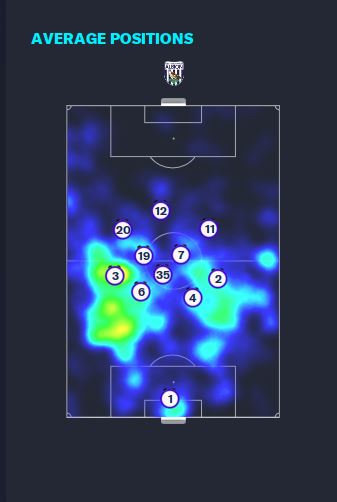Power your FM23 performances with the Half Back
The changes to the match engine in Football Manager 2023 have made it more important than ever to ensure that you’ve got the right balance in your midfield.
One key defensive midfield role that’s been getting a lot of love recently is the Half Back. We’ve built a tactic around it with EFL side West Bromwich Albion, who have two natural Half Backs in Okay Yokuslu and Jake Livermore, to show you how best to play with the role in FM23.
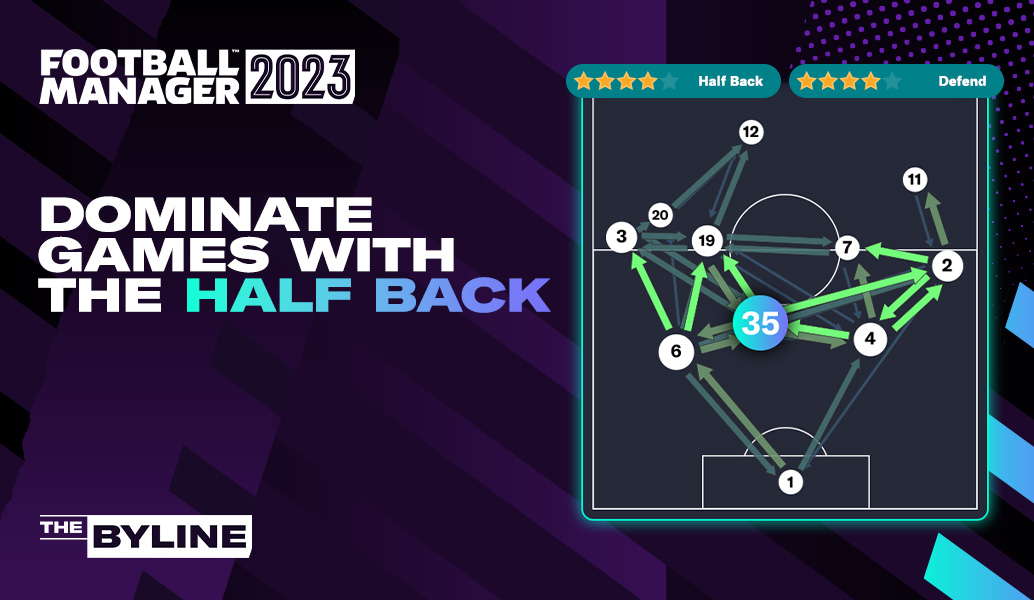
In FM23, the Half Back is described as a player that looks to serve a role somewhere between that of an aggressive sweeper and a defensive midfielder. The Half Back drops deeper than a standard defensive midfielder in possession and looks to offer an outlet for quickly recycling possession and protection against the counter-attack.
Ultimately, that means that the Half Back isn’t a particularly ambitious role. Instead, it’s a defensively-minded midfield player that when in possession keeps the ball moving with short, simple passes and when out of possession drops deeper to function as an extra defender.
Strong Mental Attributes are essential to a good Half Back, with good scores for Passing, First Touch, Marking, Tackling, Jumping Reach and Strength also important.
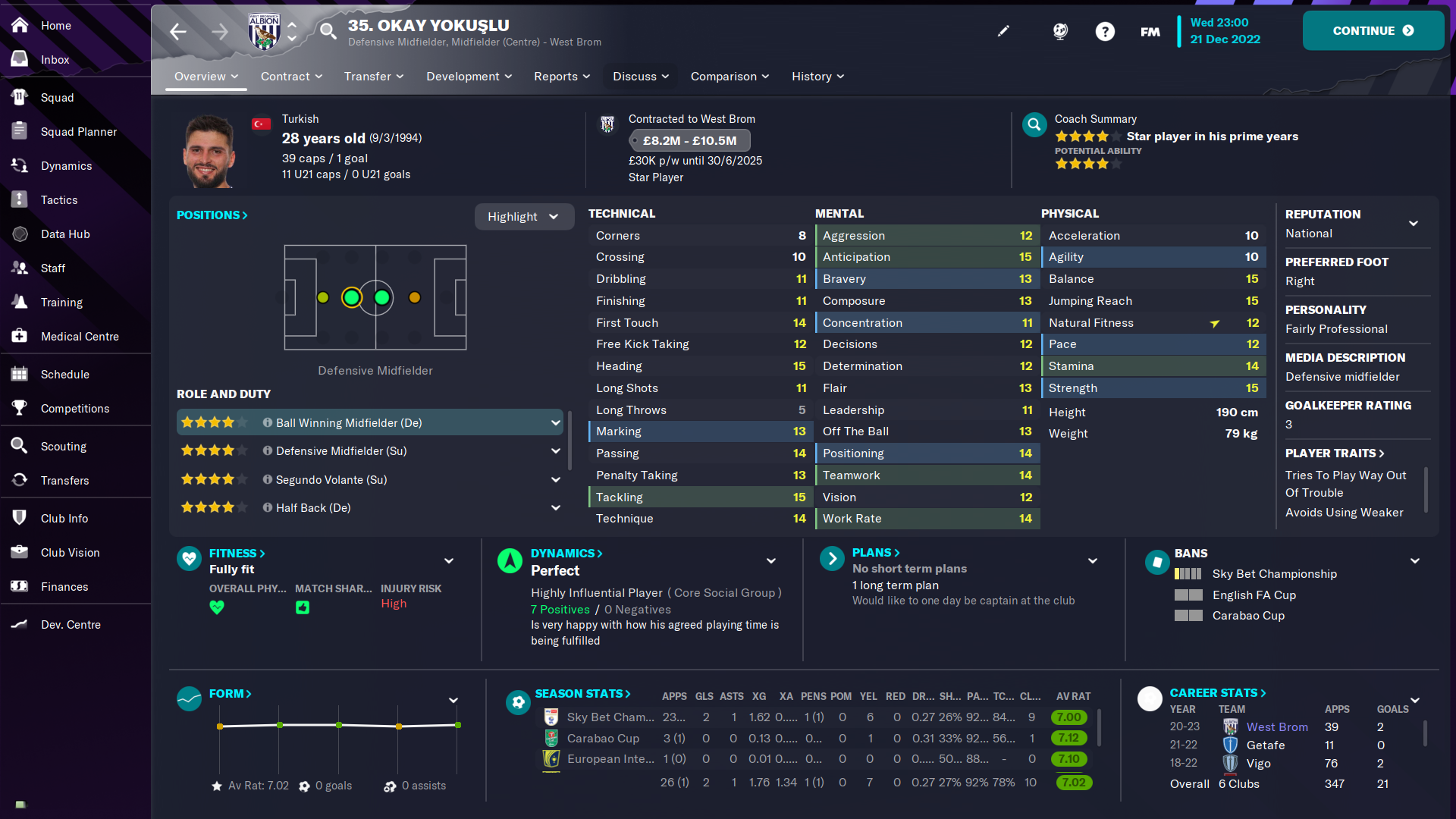
The Theory – Tactic Building
Half Backs are most effective in teams that are quite narrow in possession and look to the wide areas for their primary source of creativity. To maximise that for this article, West Brom were set up in a classic 4-3-3.
As mentioned above, the Baggies were chosen for this explainer because they have two players well-equipped to play the Half Back role. Okay Yokuslu had a slight advantage in a few of the key Attributes, so he was the first-choice starter here.
With the Half Back being a primarily defensive role, the other two midfield players need to provide more attacking thrust. Although you could opt for two playmakers or the ever-popular Mezzala, in this instance we went for a Carillero and a Roaming Playmaker.
The Carrilero is a shuttling role, moving laterally across the centre of the pitch and acting as a connector between the defensive line and the more attacking players in the system.
The Roaming Playmaker, meanwhile, is the creative heartbeat of the team. Regularly the spearhead of the team’s attacks, whether it was John Swift, Tom Rogic or Jayson Molumby in that position, they would regularly receive the ball in deeper areas before moving forward with real urgency.
It was noticeable during transitions that the 4-3-3 essentially became a 3-4-3, with the attacking Wing-Backs pushing up to the same level as the two central midfielders and the Half Back becoming an auxiliary third Central Defender.
As the Wing-Backs were offering natural overlaps in the wide areas, you don’t want your wide attacking players hugging the touchline as well. Therefore, we set them up as an Inside Forward on the left and an Inverted Winger on the right, encouraging them to cut in centrally and offer passing options for our Advanced Forward.
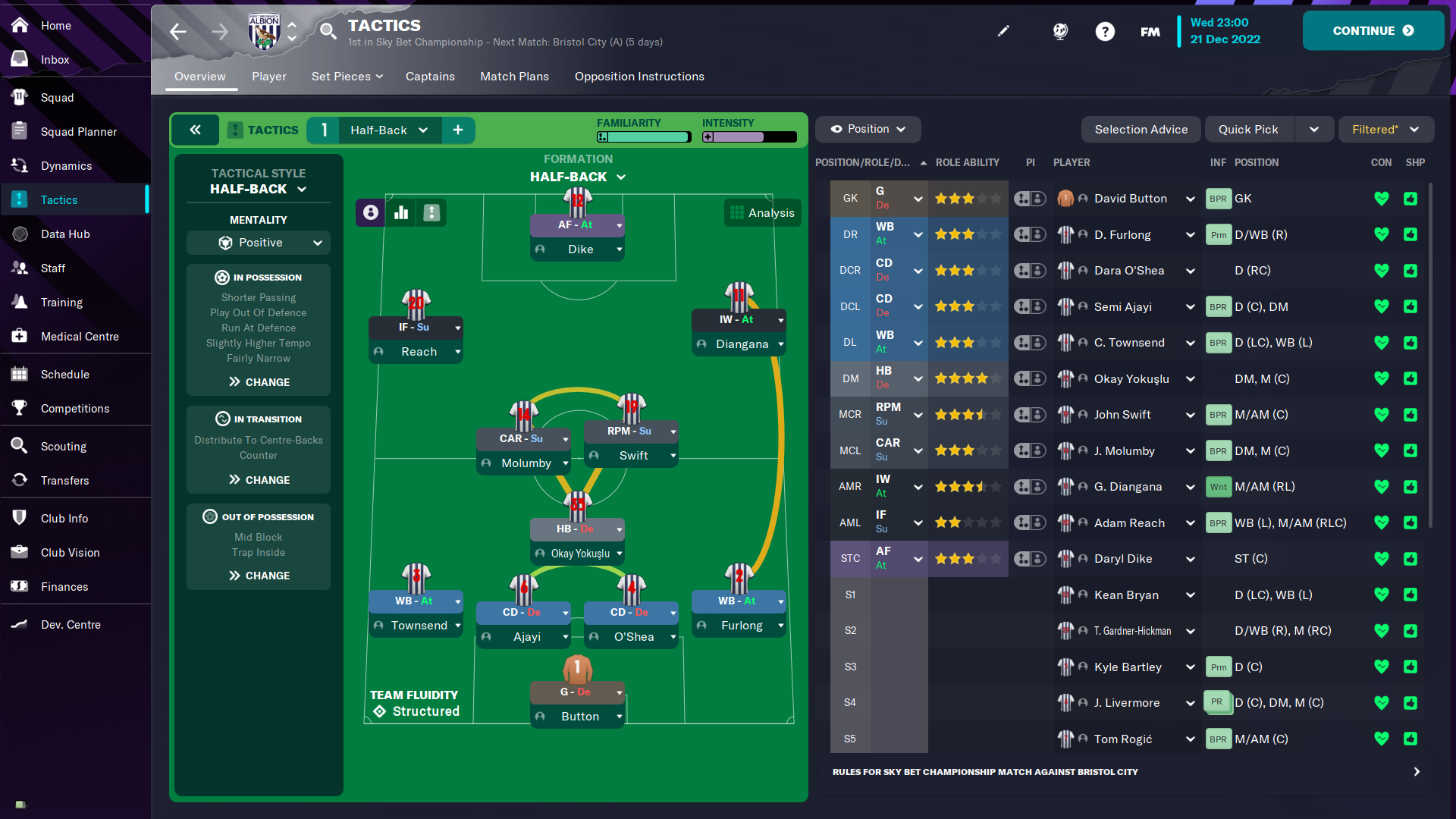
As West Brom are one of the Sky Bet Championship’s stronger teams, they had the ability to dominate possession in most games, particularly at home. With that in mind, the team were instructed to play at a Slightly Higher Tempo but keep the passes short.
Defensively, the team operated in a Mid Block – not so aggressive that they’d get done by long balls over the top but sufficiently aggressive to not be making all defensive actions on the edge of their box.
In terms of individual instructions, the only ones used were for the Half Back. Here, Yokuslu and Livermore were instructed to press less intensely and hold their position.
The Practice – How did we get on?
To test this approach out, we played through the first half of the season with West Brom. After 23 games in the Sky Bet Championship, our Baggies are first in the table, two points ahead of Norwich City and five points ahead of the teams in the play-off places.
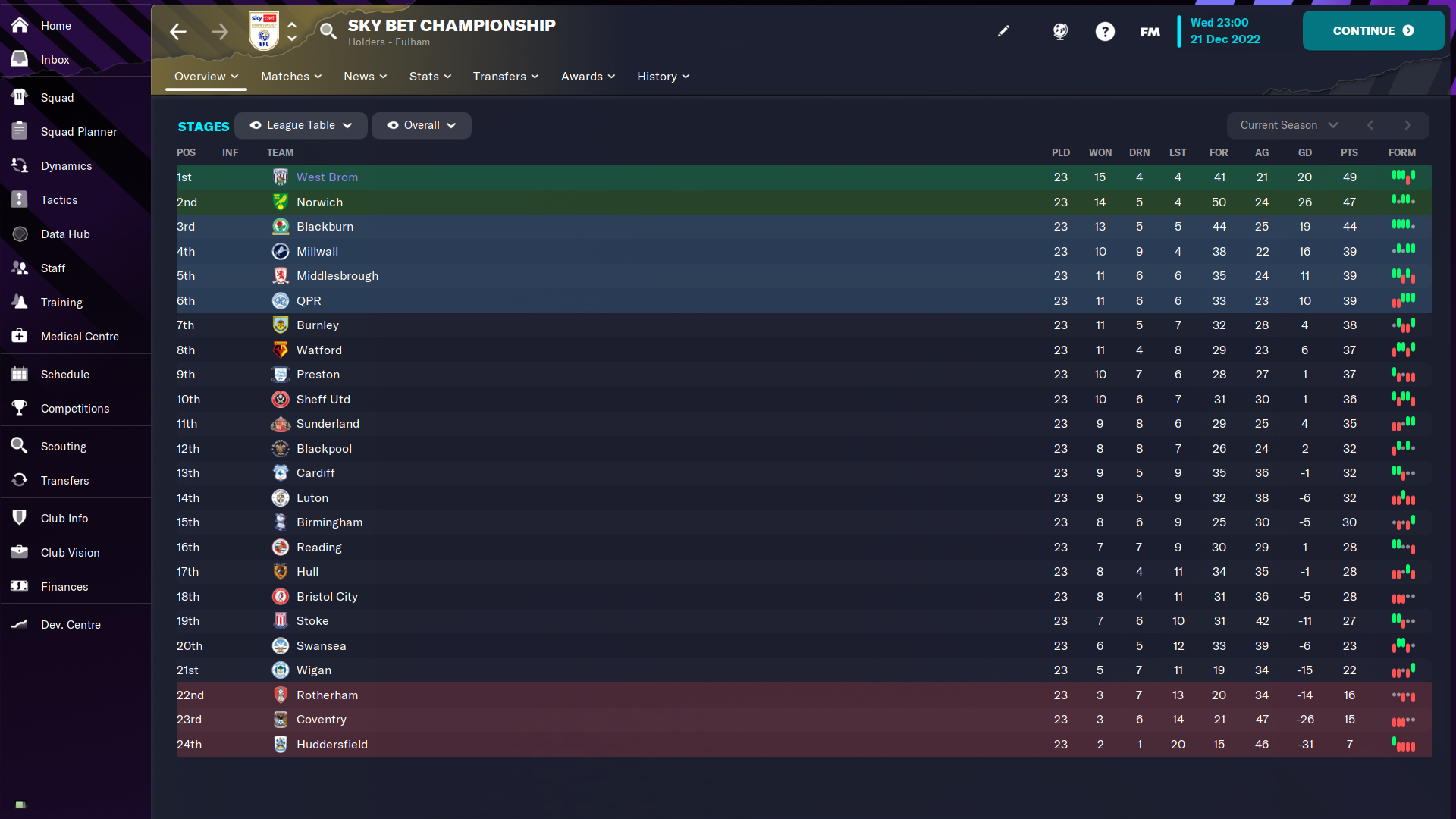
Looking at the table, West Brom have got the third-most prolific attack in the division with 41 goals scored and the best defence with only 21 conceded. Interestingly, the Data Hub shows that in addition to an above average team performance in almost all areas, that attacking return is actually six goals short of where it should be based on the chances West Brom created.
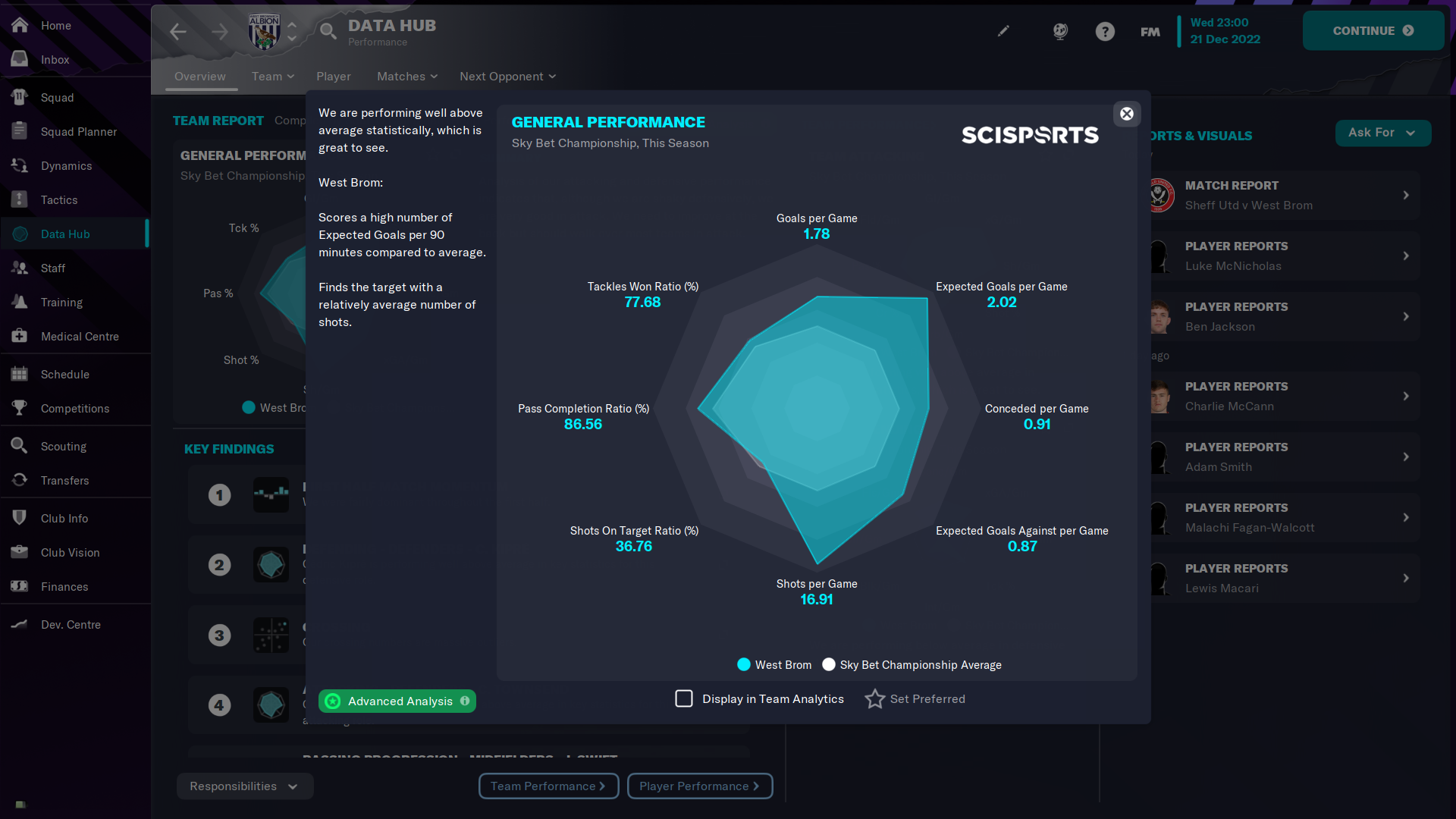
In terms of individual accolades, our main striker Daryl Dike was top scorer with 18 goals, the second-best in the league, while Jayson Molumby led the way creatively with seven assists.
The Baggies also made it to the Last 16 of the Carabao Cup, beating top-flight opposition in the third round before losing away at Sheffield United.
How did the Half Backs perform?
Yokuslu started every game in the Sky Bet Championship for West Brom in this test, scoring twice, assisting once and finishing with an average rating of exactly seven.
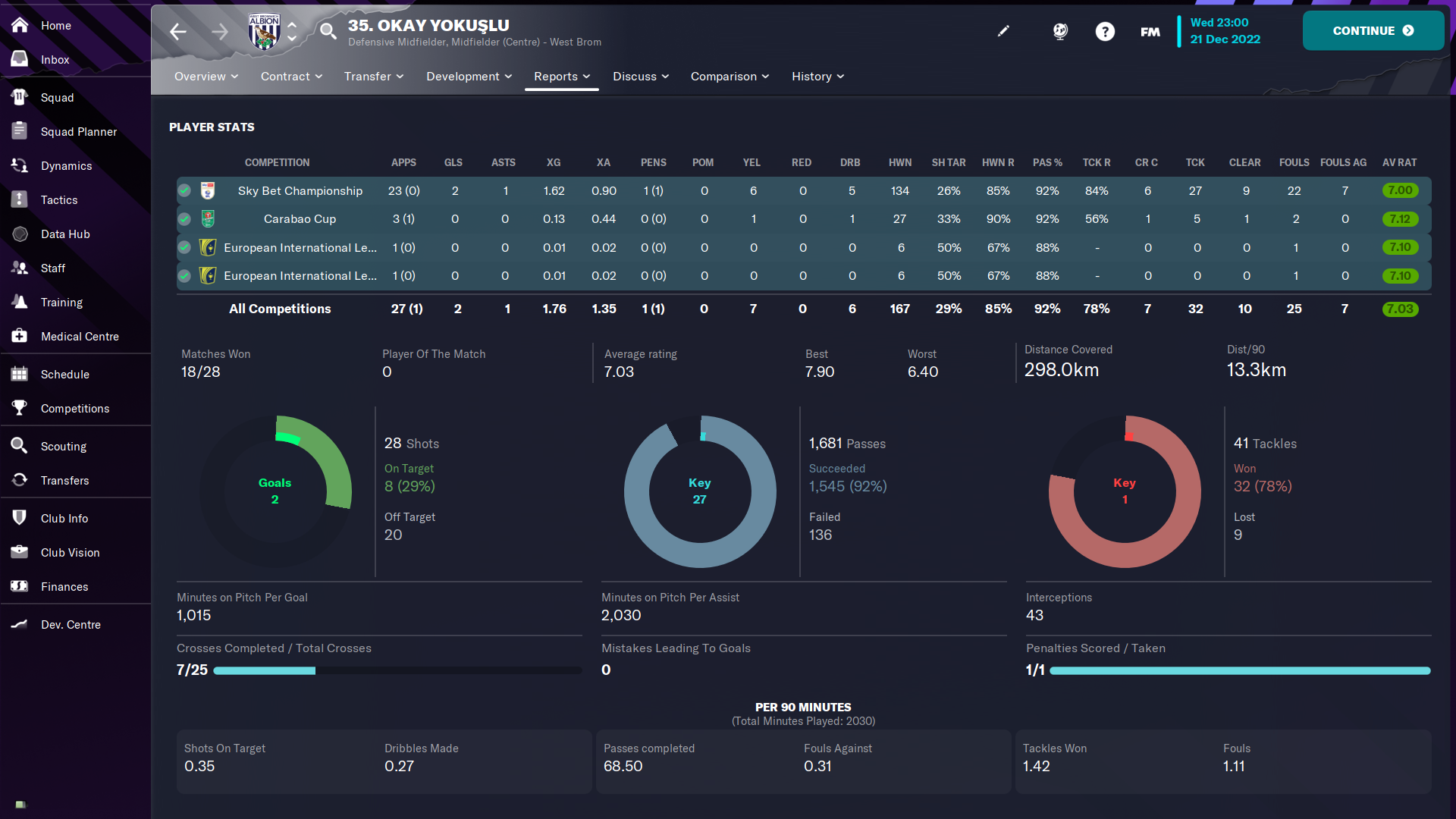
Although none of the numbers of that screen will blow you away, the Turkish international was the definition of Mr Consistent and integral to the way the team played. His controlling influence at the base of the midfield and inclination to drop deep meant that West Brom retained possession easily and completed more than 500 passes in most games.
Yokuslu was among the league leaders for Progressive Passes and Physical Output, with the latter shown in the graph below.
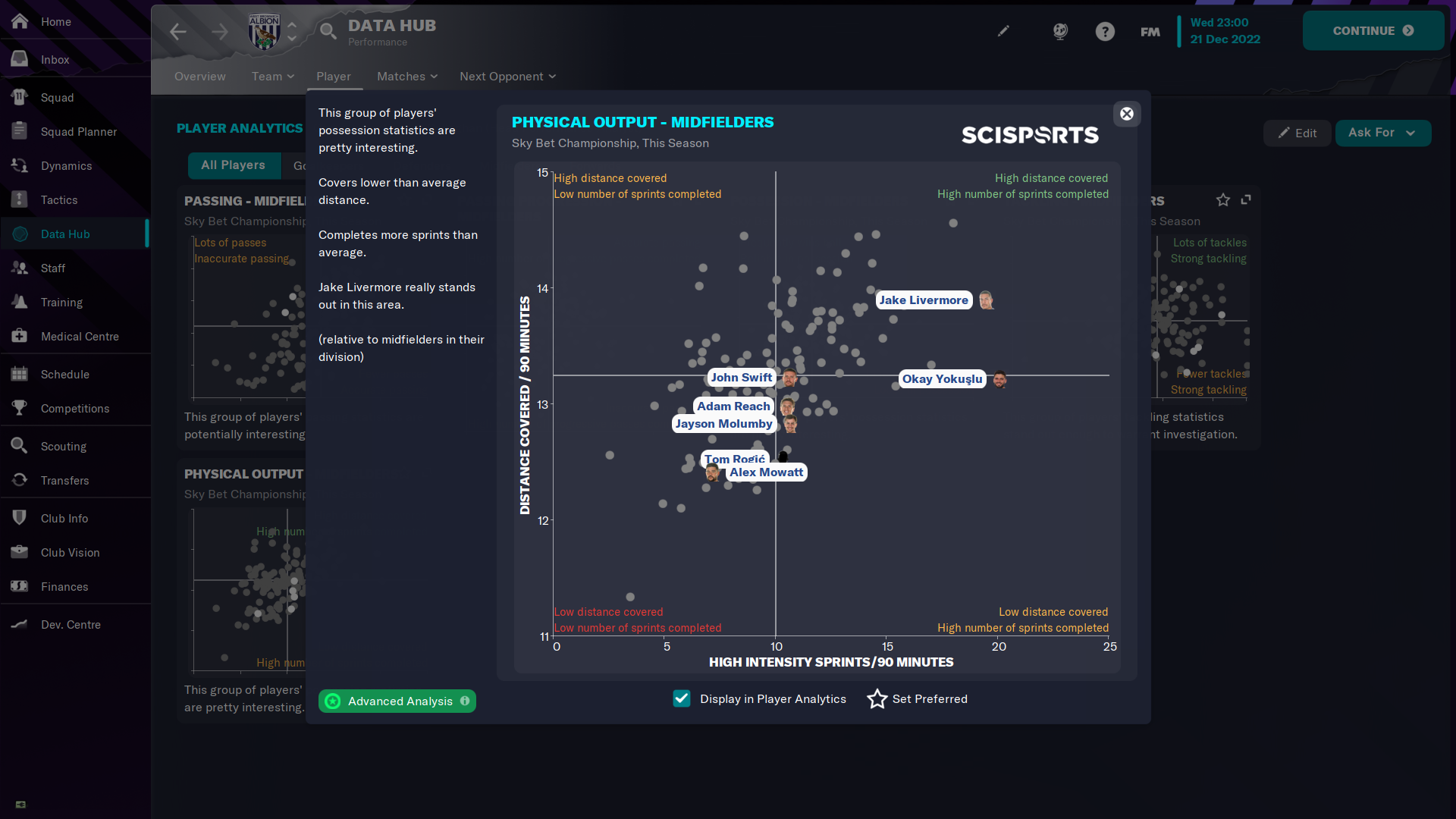
With the tactical instruction to play out from the back, much of the team’s build-up play was quite structured, with the ball moving from the Central Defenders to Yokuslu and then onto either one of the more attack-minded midfielders or a wide player who was able to dribble and move play forward.
The defensively solid platform provided by Yokuslu’s role within the tactic meant that a lot of West Brom’s possession was in the opposition final third. As such, it wasn’t just possession for possession’s sake but actually probing, attacking use of the ball in dangerous areas that contributed to the team having the highest xG in the entire division through 23 games. The Pitch Tilt graph below shows how much control and dominance West Brom were able to exert in most games.
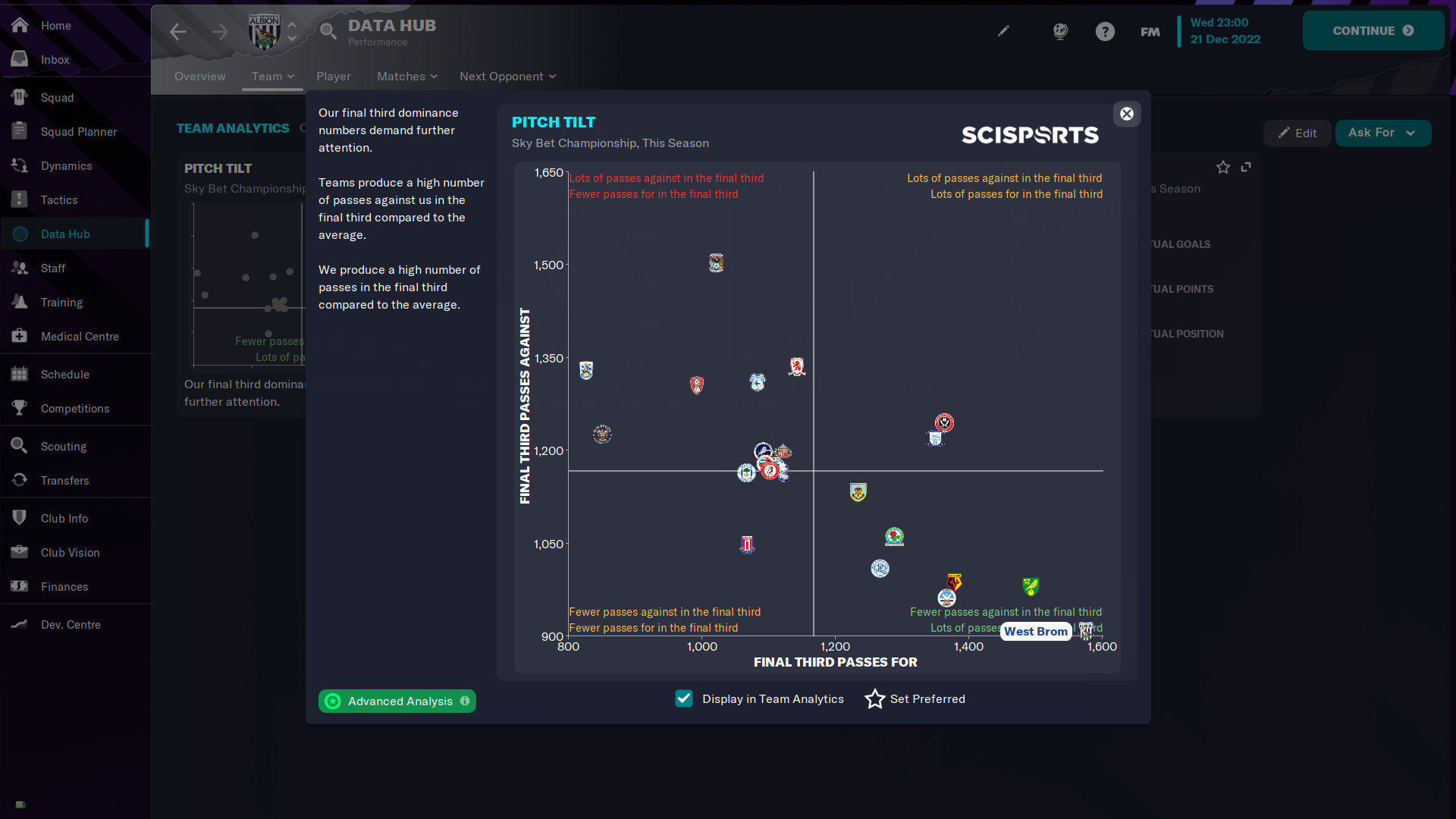
With Yokuslu staying fit and proving to be so effective, most of Livermore’s 14 appearances came from the bench. He was still effective and looking at the Data Hub shows that although he fulfilled the same role as his Turkish teammate, he performed it in a slightly different way.
For example, Livermore ranked similarly highly as Yokuslu for progressive passing and pass completion. Where they really differed was tackling and tackle completion. Livermore averaged 3.16 tackles won per 90 minutes compared to 1.47 recorded by Yokuslu and the Englishman’s tackle completion rate was 16% higher.
Although his data sample size is smaller, there’s enough there to make a valid comparison between the two players. The main conclusion we drew from it was that the circumstances of the game that both players were operating in differed – Livermore often came on to offer fresh legs when we were trying to see games out and the opposition were trying to come back at us. As such, he likely had more tackles to make and more defensive work to do than Yokuslu, who was there in the earlier phases of the game to set the tone and help us establish a lead and control over the game.
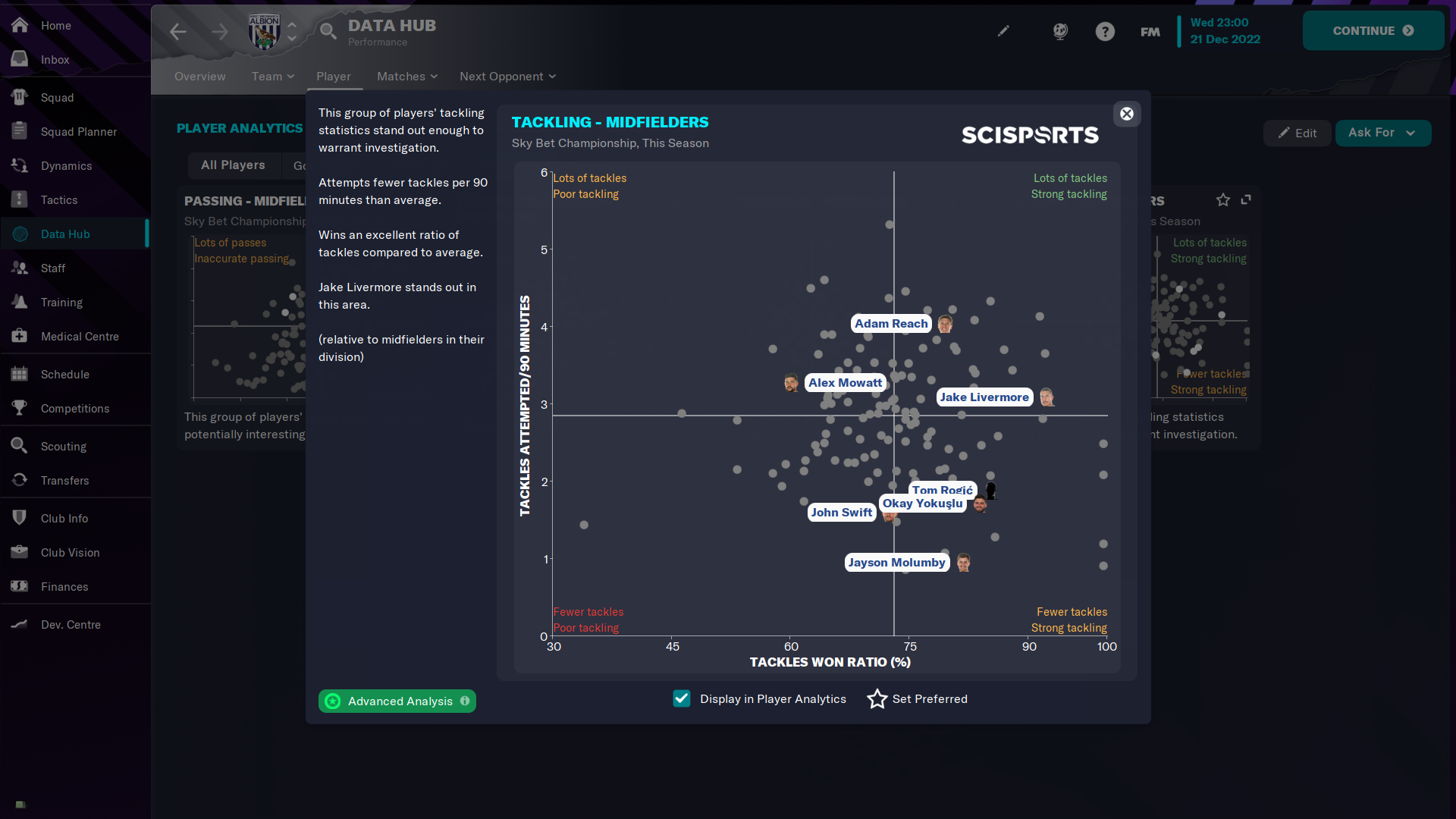
Although you might need to make some adjustments for the players you’ve got at your disposal, this blog should have given you a good insight into how the Half Back role can work and how it could be the difference-maker when you’re next putting a tactic together.
With defensive stability and a base on which to control possession, let us know your success stories when deploying a Half Back.













